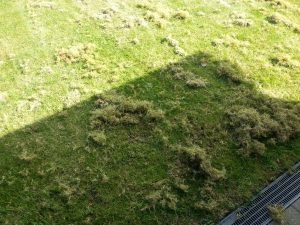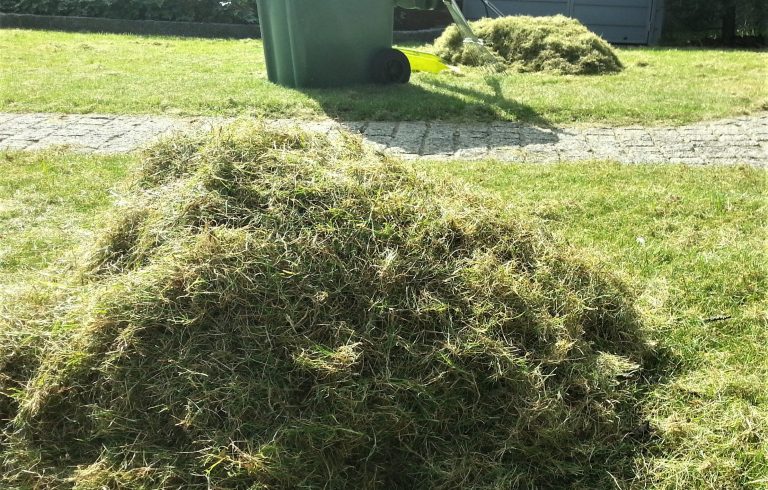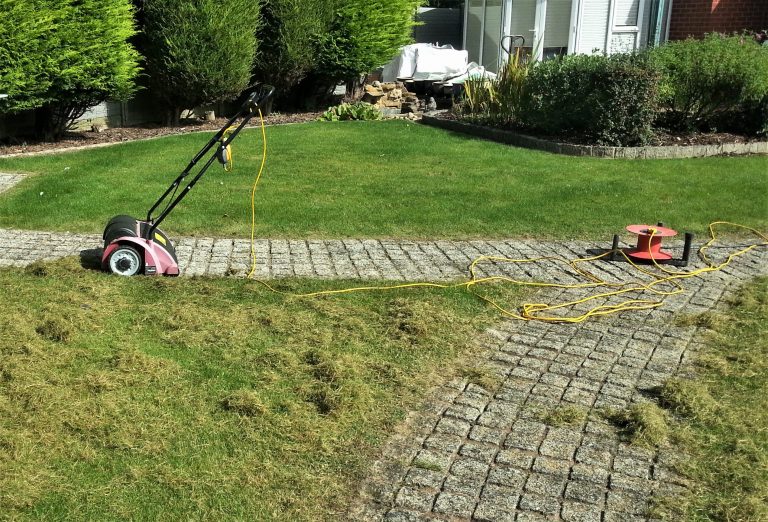MFG Step by Step Guide on "How to scarify your lawn"
Achieving a dream lawn is much easier than you think. Scarifying is one lawn treatment that’s great for old lawns that need rejuvenating or for lawns that are prone to heavy build up of moss.
Scarification helps to create the right environment for grass to grow healthily. Lawns under two years old should not need scarifying.
I’ve set out this guide with easy to navigate headline titles so you can find the content that’s most useful to you.

Why scarify your lawn?
Over time, material builds up in a lawn that slows down the healthy growth of grass. That material is termed as “Thatch”. Thatch is a mixture of lichen, moss, weeds, debris (like tree litter, leaves) and old, decaying grass.
Thatch needs to be removed to create space and reduce competition, so grass can grow into the lush green lawn that you desire.


What is scarification?
Scarification is a process which removes thatch from the root of the grass in order to give it some breathing / growing space. In a lot of cases it is (or should be) only part of a wider set of garden lawn treatments.
Scarification can be done by hand with a garden rake or by machine. Mechanical Scarification is quick – but it is a robust treatment and does not discriminate! So treat it with reverance.
A hand lawn rake can achieve a much lighter scarification and can be targeted and measured too – but it is slow to do and very labour intensive.
Scarifying is a destructive process and will thin out your lawn, so be prepared to budget for over-seeding your lawn too if that happens to you.


Scarification Aims
The main aim of scarifying is to get the lawn into a healthy condition – where the soil is healthy, there’s no thatch build up, it has good nutrients, it drains adequately and provides the right growing conditions for grass to thrive in.
When to Scarify?
The best time to scarify is early spring and late autumn when the grass is actively growing. This is important, so that the grass has a chance to recover afterwards.
I wait for a dry spell of two days and mow on the first day and then scarify on the afternoon of the second day – the lawn will be firm underfoot and the grass dry too. This means i get to inspect the grass while it is long, after mowing and prior to scarifying and I have a good mental note of what needs to be done.
A hot, dry day, with no wind is preferable. The grass has dried out enough that it won’t stick, the thatch will dry in the sun as you are working along and when you come to rake it, it will be light to rake into mounds and won’t blow away in the wind.
How often to Scarify?
Once or twice a year is usually sufficient for most lawns. If you are having to scarify more often to keep your lawn under control, it’s likely that you have not considered other complementary lawn treatments.
If you over-scarify your lawn it can end up looking scalped and if that’s the case, rake the soil patches by hand, water the lawn throughly the day before and then over-seed it and leave for 4 to 6 weeks to recover and the new grass to establish.
My advice would be to set the scarifier to it’s highest setting until such times that you gain more confidence in the process.



Which Scarifier to use?
If you want to keep your lawn in good condition a mechanical scarifier is a worthwhile investment. They range in price from £50 upwards.
You can buy a petrol scarifier, a cordless / battery operated one or an electric one depending on your budget and preference.
You could also borrow one or hire one if your budget is limited.
I have used Einhell petrol and electric versions and they do a good job. I prefer a petrol one as it’s easier to use than trying to manage a cable.
When buying one – check that it has a tine attachment (so it can function like a mechanical lawn rake) but also, (more importantly) a blade roller (this is what you use when scarifying).
Before you scarify
Before you scarify, inspect your lawn. Pinch a clump out here and there and look at it up close. Analyse it! 🙂 What percentage is moss or weed, how green is it?, is it old or new grass? are there insects in it? Has it lots of brown or white roots?
It’s a good idea to take some close up photo’s or videos of it, so you can compare before and after and be sure to include some reference items in each shot – so you know the location when you come back to look at your footage.
Have a walk around and look at the lawn and consider..
- The current health of the lawn
- Any moss or weed issues
- Any thatch
- Drainage (where it drains to)
- Elevation (how it slopes)
- Soil condition (are there patches? is it compacted?)
- Exposure to elements – sun, shade, wind etc.
- Age of the lawn
- Condition
- Colour (screw your eyes up when scanning it)
- Length
Taking these aspects into account, you can determine where the bad patches are. Work out where you will start and finish. Time wise, allow three times the time it takes you to usually mow your lawn.
If you have deep rooted weeds like Dandelions – remove them with a hand trowel before hand.
Be Safe
Clear the area first of any debris, items or obstacles.
Inform people what you are going to do beforehand and keep children and pets away from the area. Follow your manufacturers operating instructions.
Safety boots, gloves and eye protection are advised.
Scarifying Technique
- Mow the lawn a few days beforehand to reduce the amount of waste material and keep the grass dry when scarifying
- Decide where you will start and where to finish
- Take the basket off – it’s a complete waste of time to fit a basket to a scarifier!
- Scarify the edges of the lawn first
- Work side on to any paths or obstables that you may hit with the blades
- Set the height of the blade to highest from the ground and do light passes
- Work in straight lines, horizontally to the direction in which you usually mow
- Rake the thatch into mounds after it dries – then collect them up for disposal before you do a second pass
- Do a second pass, (if required) in the direction you usually mow
- After all the thatch is collected up – put your mower on a high setting and mow the lawn as normal.




Post Scarification
Scarify, and then post scarify, water the lawn by drenching it. If you have a lawn feed, use that too after the water has soaked in for several hours.
A scarified lawn needs time to recover, so water and nutrients at this time will help it tremendously.
If you still have a lot of moss, then wait a few weeks after feeding it and use a granulated or liquid moss / weed / feed treatment. This done in the Spring will get rid of the worst of the moss before summer.
After the moss killer has done it’s job (usually a few weeks wait), do a good hand rake or light passover with a mechanical lawn rake again and give it a mow to tidy it up again and remove any leftover moss.
Let the growing season take over the responsibility. Mow and water on a regular basis.
Over-seeding
If you have thinned out your lawn too much you may wish to over-seed it.
Only ever use one brand of seed or you will end up with a patchwork quilt. Its best to buy in bulk and store it.
Water the lawn thoroughly, let it drain for a day, then use a high quality lawn seed and re-seed the lawn especially where the scarifying has been most effective :-).
Leave the grass to grow and establish before mowing again – the longer you wait the better. It takes 13 days to germinate at 9 degrees (soil temperature) and four weeks to establish good roots.
After it’s first mowing, lightly feed the lawn, and watch out for any new moss returning. If you have persistent areas – just give a hand rake.
You can repeat this process, depending on the growing conditions throughout the year. Less is more in this case.
Other lawn care options
Additionally, you can consider other things like mechanical aeration, hand aeration, improving drainage with sand and when you have moss under control, give it an occasional mulch cut to add core nutrients back into the root system.
The key thing with scarifying is that is only one part of the overall process of lawn care – not an emergency first aid response when things have got out of hand.
Have fun!


